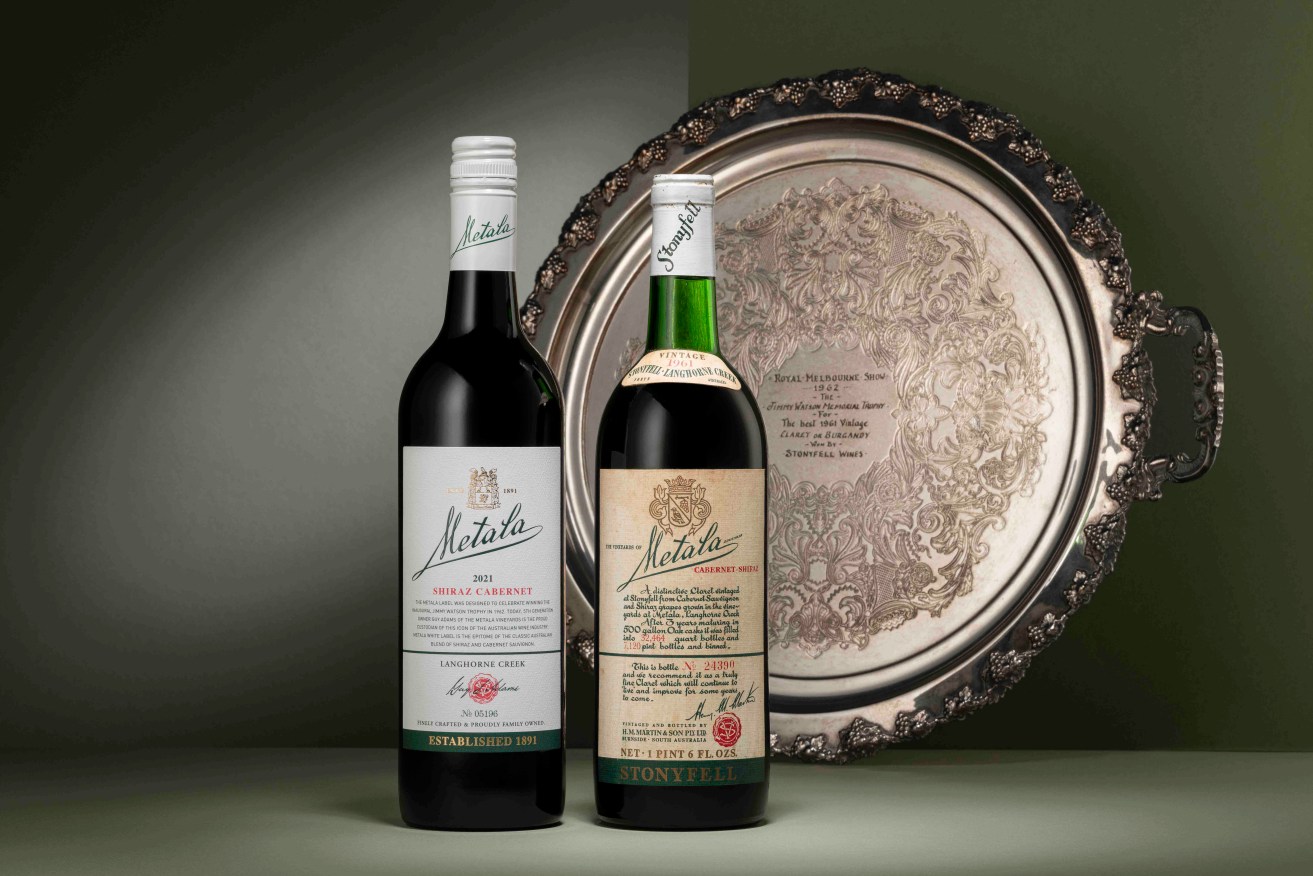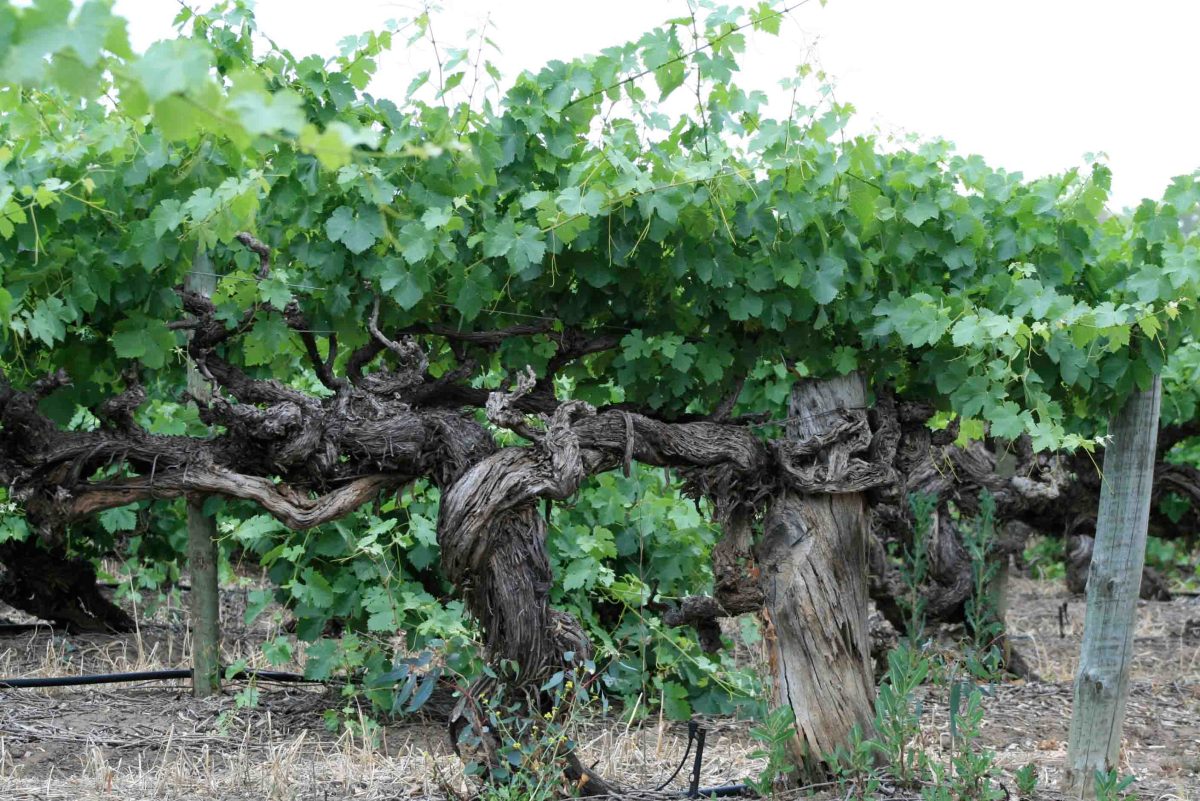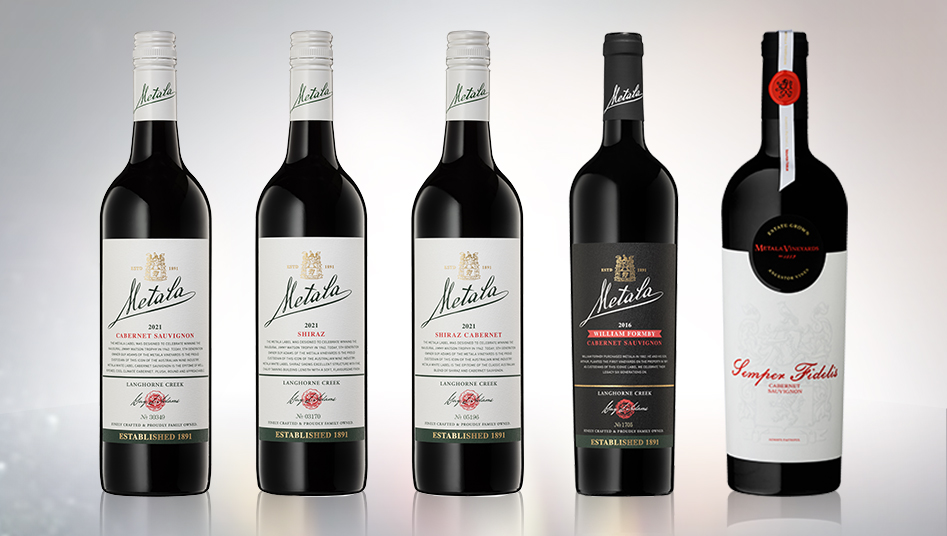Wine reviews: Loved SA wine brand finds its true mettle
How one farming family battled a corporate giant to regain its century-old South Australian wine legacy.


The 2021 Metala Shiraz Cabernet, back in family hands, next to the 1961 Jimmy Watson winning version of the same blend. Supplied image
Of all the wine trophies in the land – and there are scores of them – the one that resonates the most to many pundits is the Jimmy Watson Trophy, judged annually at the Melbourne Royal Wine Awards and announced around this time every year.
Awarded for the best Australian red wine from the current and previous vintages, the “Jimmy” celebrates its 60th anniversary this year. It has been awarded to a South Australian wine more than 40 times, including the inaugural 1962 trophy.
That first winner was a humble little number, Stonyfell Wines Metala Cabernet Shiraz 1961, affectionately subtitled “Claret Type”.
There’s quite a story that has followed the Metala wines all the way through to the present day, both in the remarkable estate source of their fruit and the wild ride of ownership the brand has endured and survived.
It’s another South Australian wine yarn that starts with grape vines planted in the 19th century, this time on the flood plains of the Bremer River in the Langhorne Creek region. (Strangely, there is no waterway with that name.)
Englishman William Formby purchased the Metala property on Lake Plains Road in 1882 and, with his son Arthur, planted 21 rows of Shiraz and 14 of Cabernet Sauvignon in 1891. Three years later they planted another five acres of Shiraz up the road and, in 1902, they raised a stone and mud building where they made mostly fortified wines which were shipped to nearby Milang on Lake Alexandrina to be transported back to the Mother Country.
Fast forward to 1981, when fifth-generation family member Guy Adams took over the estate. By then, it was a 1000-hectare mixed farming business across two southern Fleurieu properties with sheep, crops and large plantings of traditional variety grapes.
But there was something missing in the overall business picture.
Guy, his wife Liz and family have only recently been able to make and sell any wine under their beloved estate name. Until a few months ago, Metala had languished and virtually disappeared within the depths of a series of multi-national corporations, the final one being the massive Treasury Wine Estates.
How it got there and how it returned home to the family dynasty is some saga. This is a short version of the tale, mainly because the real-life version has taken 70 years and involves a fair bit of legal wrangling that is unable to be detailed due to confidentiality agreements and other complications.

Guy Adams is the fifth generation of the farming family that planted the first Metala vineyards. Supplied image
It all started when a side of the family by marriage who owned Stonyfell Wines, based on the Adelaide Hills face zone, was passed the reins of the winemaking for the Metala Vineyards fruit in the early 1950s. Under their auspices, steered by revered winemaker Bryan Dolan, they won that first Jimmy Watson Trophy in 1962.
Ten years later, Stonyfell was sold to Dalgety Wine Estates, who registered Metala, a strong player in the portfolio, as a brand. Here the corporate tree sprouts a messy set of branches. Seagram, the Canadian-based spirit company, wanted some wine industry action, buying Dalgety’s wine business, which now also included the Saltram brand and estate in the Barossa. By then, Metala was being made at Saltram and still going well.
But Seagram’s ownership didn’t succeed, and Len Evans’s Hunter Valley-based Rothbury group bought the company’s wine portfolio.
Meanwhile, another wine corporate giant was on its own growth spurt, the main act being the takeover of Wolf Blass wines in 1991 and the formation of Mildara Blass. (Interestingly, Wolf Blass had further cemented Langhorne Creek on the Australian wine map after three consecutive Jimmy Watson Trophies from 1974-76, with his Black Label Dry Red Claret, also a blend of Cabernet and Shiraz. The wine also triumphed in 1999.)
Mildara Blass also bought the Rothbury Estate group, consuming with it Saltram and Metala as well buying many other renowned winery businesses across the country. And then, along came brewing giant Fosters, which had suddenly become interested in the wine trade. Fosters bought the entire Mildara Blass operation and eventually expanded its wine group into one of the world’s largest production conglomerates after it had bought Californian-based Beringer Winery to create multinational Beringer Blass, morphing then into Fosters Wine Estates.
In 2005, Fosters also acquired Southcorp, which included iconic brands such as Penfolds, Lindemans, Kaiser Stuhl, Seaview, Leo Buring, Rouge Homme, Wynns and several others, but the wine side of the whole business under-performed and, in 2011, Fosters split the mega-company into brewing and winery arms, the latter becoming Treasury Wine Estates (TWE).
Somewhere buried in the midst of all this was little old Metala, still being made at Saltram winery in the Barossa, for many of those years by Bryan Dolan, and then his son Nigel from 1992 until 2007. Both were Jimmy winners several times, Nigel twice as winemaker for Seppelt (1992) and Saltram (2003). He continues to create wines with fruit from the older Metala blocks for his own Dolan Family wine label.
The Adams family’s only connection to any of this was a contract to supply grapes to that string of corporates, eventually finishing with TWE.
“We had no say in any of that, with the mergers,” Liz Adams recalls. “The contract for the fruit just followed with the ownership changes.”
Liz is speaking to me at the kitchen table of the original Metala homestead built in 1860 – Guy is away on a sales mission to India then Singapore and New Zealand.
“We tried to buy the brand back a number of times. We had a crack in the mid-1990s, then another in the 2000s.
“Guy always felt that the name belonged back on home ground,” Liz explains. “He feels the obligation of being the fifth generation on the property – he carries that and feels like he is the genuine custodian.”
But TWE wasn’t playing ball, keeping the Metala brand within its stable even though it seemed to get very little love from above. It essentially became a commodity wine, ending up at the big retailers, often in the two for $20 basket.
While all this was unfolding, the Adams’s had set up and also acquired two of their own brands, Brothers in Arms and Killibinbin, which mostly accessed the larger blocks they had planted to the east of their “old girls”, as they call their ancient vines. Still, TWE was taking around a quarter to a third of the property’s grape harvest.
Then came the unthinkable for Guy and Liz. With TWE’s contract for the Metala fruit due for renewal in 2017, the corporate partner told them they no longer required their grapes, though they continued the brand by sourcing from other vineyards in the area, including their own.
Metala had finally lost its true provenance, though clever wording on the bottle referred to its Jimmy Watson success. Consider this, from the 2020 vintage bottle: “After fifty years Metala White Label retains its distinctive label that honours the classic Australian blend…”
The implication to any consumer was that it came from the original source.
This stung, Liz recalls.
“When they stopped buying the fruit, Guy was hurt by that. He wanted to clear up the confusion over who owned the brand,” she says. “All his adult life he’s wanted the name back.”

Metala’s Shiraz vines planted in 1891. Supplied image
Further management issues with the leased vineyard then unfolded in 2019, which prompted the latest round of negotiations to return the brand to the family.
And while that was underway, the China tariff saga hit the Brothers in Arms and Killibinbin trade, as well as lucrative bulk wine contracts into China that all added up to about 75% of the family’s business. It was clearly a drastic time that required pivoting into other overseas markets, while dealing with all the other managerial issues on the farm and in the legal arena.
Finally, after 18 months of negotiations with TWE over their vineyard and return of the brand name, that David and Goliath battle has ended: the Adams family is now back in control of their own famous wine brand name.
Details of the arguments are guarded. TWE has been approached for their side of the story but a company spokesperson replied: “The company isn’t talking about the matter any further.”
The good news is a new set of Metala wines has been released that has come direct from family farm to bottle, sourced out of the several Adams vineyards planted over a century.
Winemaker Jim Urlwin has gone back to many of the older vintages to tap into their stylistic and vineyard DNA in the making of these new wines, starting with three classic white labels and now including two super-premium labels, the William Formby and Semper Fidelis in both Shiraz and Cabernet varietals that celebrate the family history and tap mostly into those magnificent 1891 vines.
“There’s a definite Metala character here,” Urlwin says. “It’s about the old gum trees, and those vines that have lived there under them.
“It’s the leaf and bark and gum nuts, and forest floor.” That last note leans to Australian forest floor, not European, which often is a reference in old-world wine descriptions.
Having these wines return to their roots is further evidence that Langhorne Creek has a particular signature, says Nigel Dolan.
“If you’re anywhere on the floodplain of the Bremer where the older vines are – and that includes Bleasdale and Lake Breeze on the western side of the creek line – then it’s pretty significant,” Dolan says.
“People talk about the ‘cigar’ (sector of terra rossa soil) in Coonawarra, and this is similar.
“You’re talking quintessential Langhorne Creek.”
The 2022 Jimmy Watson winner was announced on Thursday night at the Melbourne Royal Wine Award, where South Australia was the most represented state with 967 entries (43% of total) from 170 Exhibitors (almost 45% of total). South Australia won 13 major trophies of the 22 awarded in the general multi-state competition classes, excluding specific state based trophies. The Jimmy went to Hentley Farm’s The Old Legend Grenache 2021 from the Barossa Valley.
TASTING NOTES

Metala Cabernet Sauvignon 2021
Langhorne Creek / 14.5% / $20
One of three traditional expressions under the Metala white label range, from across the estate’s newer vines and perhaps a dash of older vineyard gear as well. This is a fairly earthy Cabernet style, chocolatey even, where varietal aromatics are more present in the palate, suggesting crushed crimson berries with tangy freshness retained, supported by mid-weight tannins to fill out the finish. Easy going and good value for around the barbecue.
Metala Shiraz 2021
Langhorne Creek / 14.5% / $20
Like its white label sibling Cabernet, we start here with an earthy note, aromas restrained while the palate comes together in a weave of dusty tannin, plummy juice and gentle country-comforting styling. Nothing too complicated and suited primarily for easy-going drinks alongside charry meats.
Metala Shiraz Cabernet 2021
Langhorne Creek / 14.8% / $20
A duet of the traditional Metala varieties, this is Shiraz-dominant though starts with enticing Cabernet and gum forest aromatic wafts. It’s this harmonic expression that makes the Great Australian Red blend so special, and successful from this region especially. Swelling in the glass with rich ripe dark plum and blackberry compote notes, there’s smart integration of fruit and oak from nose to tail, seasoned also with wafts of black and white ground pepper. Full-bodied through and through, neatly supportive tannins in play, but the fruit power just stays and stays. Great to see the provenance back in play; such a blend often offers better wines at this value point.
Metala William Formby Cabernet Sauvignon 2018
Langhorne Creek / 14.5% / Cork / $80
Named after the founding father of the Metala dynasty, this steps up into a higher level of older block sourcing and winemaking, its Cabernet aromatics stretching higher and more intensely into cassis and crushed blackberry territory with finer oak treatment also on display. Flavour concentration and palate energy drive plenty of tasting interest; fine-grain tannins coat the mouth for extended finishing touches. Upping the quality notches.
Metala Semper Fidelis Cabernet Sauvignon 2018
Langhorne Creek / 15% / Cork / $250
The name: translates as “Always Faithful”, is a motto the original Formby pioneers marched to and included in their family crest. The price: set as a benchmarking point and geared perhaps towards the gifting market, as it comes in an impressive box. As for the wine, it’s a best barrel selection of all old vines from 1891, which showcases beautiful Cabernet aromatics, not over dramatic and settled into a realm of crushed crimson to dark berries at their essential ripeness. Rich fruit, 50% new French oak integrated in a cedary and savoury sense to regional background native forest notes, even and balanced tannins, excellent line and length. A wine that absolutely celebrates family history, its place, and vinous longevity.




